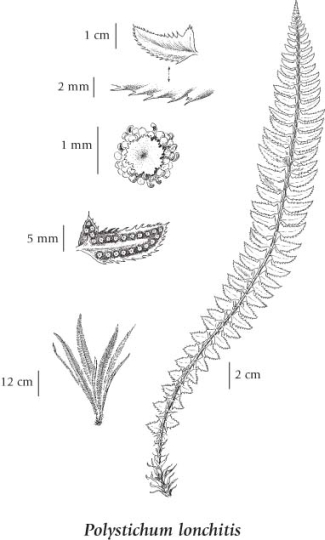E-Flora BC: Electronic Atlas of the Flora of British Columbia
Polystichum lonchitis (L.) Roth
northern holly fern (northern hollyfern) Dryopteridaceae (Wood Fern family) Introduction to Vascular Plants
|
|||||||||||||||||||||||||||||||||||||||||||||||||||||||||||||
